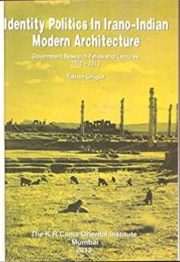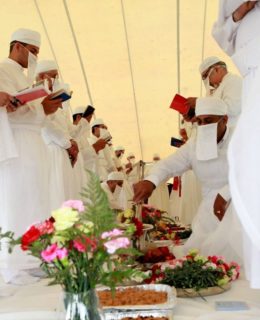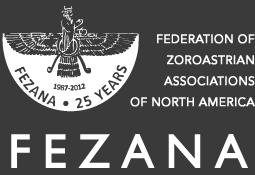presented by FIRES (FEZANA Information Research Education System)


Identity Politics in Irano – Indian Modern Architecture
by Talinn Grigor.
K. R. Cama Oriental Institute, Mumbai 2013
This book consists of a series of four Government Fellowship Lectures delivered by Dr. Talinn Grigor at the K. R. Cama Oriental Institute in February 2012. Four chapters concentrate on the cross-pollination of architecture and politics.
Chapter one traces the two different types of neo-Achaemenid architecture in Parsi India and Qajar, Iran, from the 1850s to the 1930s. Architecture, a significant sphere of Parsi patronage, was one of the most vivid aspects that linked the Parsis to their ancestral land until the late 1930s
Chapter two focuses on narratives that created a hybrid style of architecture in Qajar and Pahlavi Iran. Rulers from the antique, Islamic, and modern periods were keen on borrowing artistic vocabulary from the past to convey an expressly Iranian cultural and political distinctiveness. This chapter reveals a fundamental ideological change in the use of architecture as the signifier of royal legitimacy.
Chapter three examines the architectural history of the modern mausoleum of Ferdowsi, the renowned author of the Shahnameh. When Reza Shah’s government decided to celebrate his millennium in 1934, the discovery of Ferdowsi’s grave gave rise to a new mausoleum in his hometown of Tus. Its inauguration resulted in academic conferences in Tehran and Tus that subsequently extended to Soviet Moscow, Nazi Berlin, as well as Paris, London, and New York.
Chapter four jumps to the end of the Pahlavi era and analyses the events of October 1971. The celebration of the 2,500th anniversary of the legendary king, Cyrus the Great, validated the neo-Achaemenid architectural culture under the Qajars and the Pahlavis.
Dr. Talinn Grigor received her Doctorate from the Massachusetts Institute of Technology. She has received several prestigious grants, including those from Cornell University, and the Getty Research Institute and is currently an Associate Professor of modern and contemporary architecture at Brandeis University.
###
FEZANA Information, Research and Education System (FIRES) is a centralized collection of books, manuscripts, literature, magazines, and scholarly research materials in print and electronic form, primarily pertaining to Zarathushti faith, culture, and history.
FIRES was established in 2010, and is housed and managed by the Zoroastrian Association of Houston (ZAH) Library. It is accessible by all FEZANA Associations and individuals.
www.fires-fezana.org




